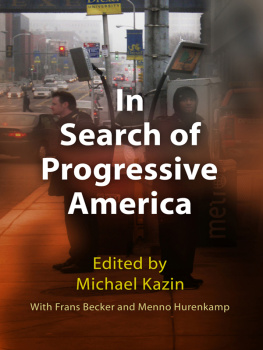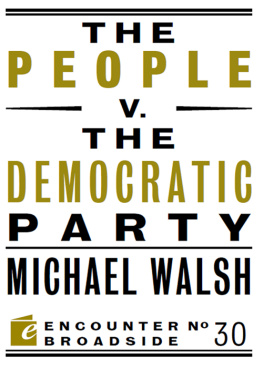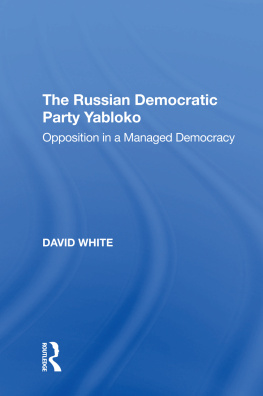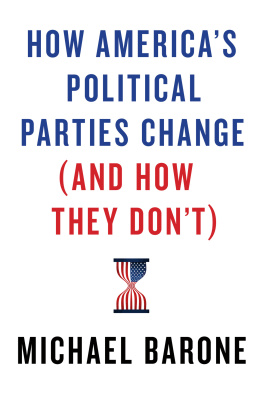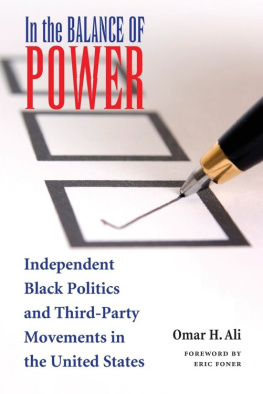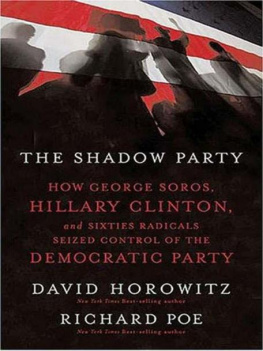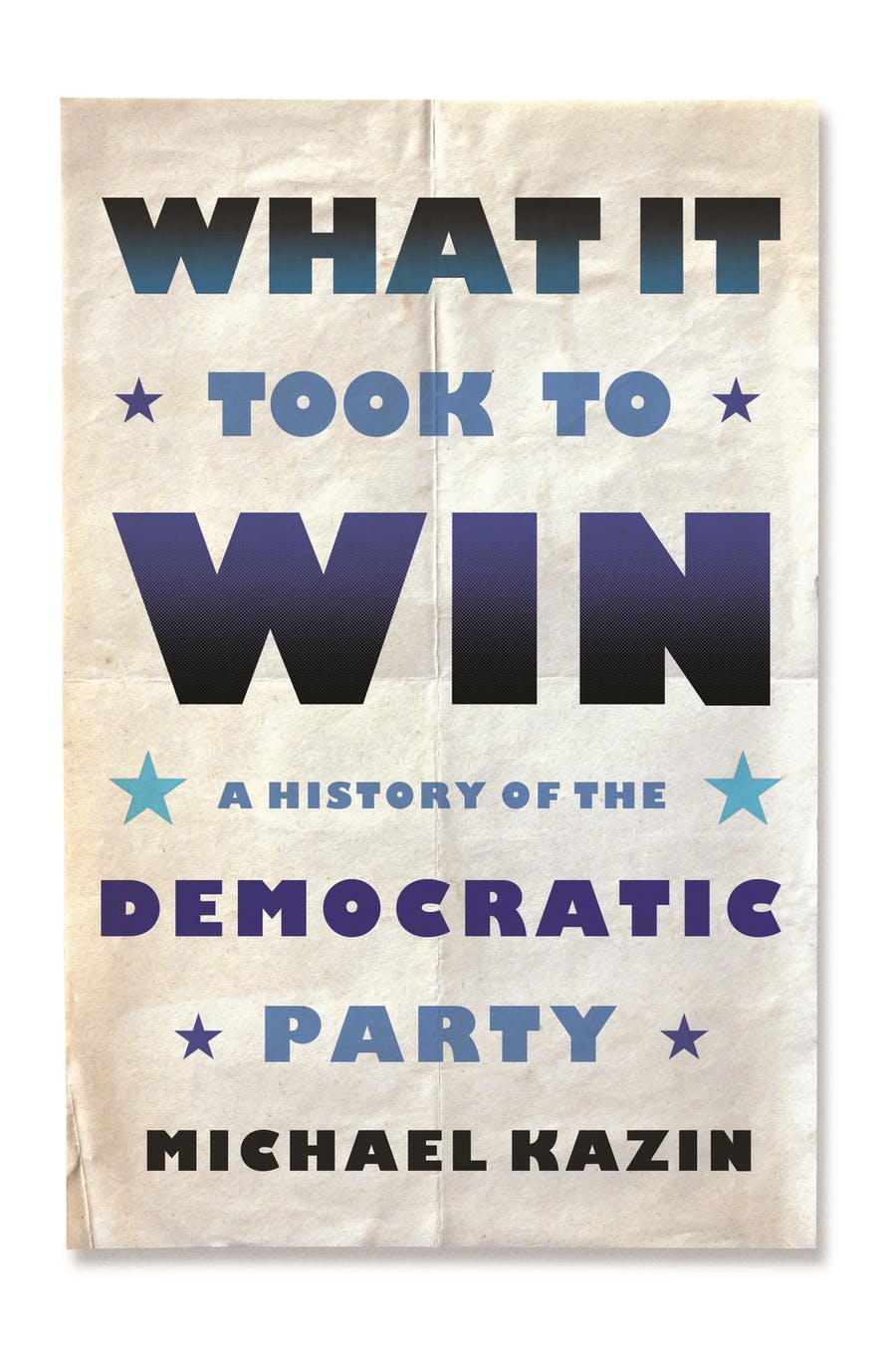Contents
Guide
List of Figures
Pagebreaks of the print version

The author and publisher have provided this e-book to you for your personal use only. You may not make this e-book publicly available in any way. Copyright infringement is against the law. If you believe the copy of this e-book you are reading infringes on the authors copyright, please notify the publisher at: us.macmillanusa.com/piracy.
For Danny and Maia
What the people want is very simple. They want an America as good as its promise.
BARBARA JORDAN, CONGRESSWOMAN FROM TEXAS, 1977
There are members of the Democratic Party that really have no business being in the same party together. I think maybe the thing that would tether us together is a belief that people are more important than property and individual wealth.
JEREMIAH ELLISON, MEMBER OF THE MINNEAPOLIS CITY COUNCIL, 2020
Parties exist to win elections.
JAMES WOOD, CRITIC
This book tells the story of how the oldest mass party in the world contended for power and what its leaders did with it when they won. The aims and methods of Democrats have evolved, inevitably, over the past two centuries. But one theme has endured: they have insisted that the economy should benefit the ordinary working person, whether farmer or wage earner, and that governments should institute policies to make that possibleand to resist those that do not. Of course, Democrats argued about and for many other causes. Yet who gains and who loses in the competition for vital resources has been a constant theme in the history of every nation and people. When Democrats made a convincing appeal to the economic interests of the many, they usually celebrated victory at the polls.
It took a hideously long time for the self-proclaimed party of the people to welcome the support and fight for the needs of Americans whose skin was not white and whose gender was not male. For the first century of its existence, the Democratic Party was in fact, if not official doctrine, an organization that solicited the votes of white men only and neglected or disparaged everyone else. During the nineteenth century, its leaders carried out the forced removal of Native Americans from their ancestral lands, defended slavery and allowed it to expand, did their best to sabotage Reconstruction, and constructed the brutal Jim Crow order that followed. They also lagged behind Republicans in endorsing woman suffrage. Not until the 1930s did the party, at the national level, begin, tentatively, to embrace an interracial constituency. The change was a long time in coming and did not result in the passage of strong civil rights laws until almost three decades later. The liberal journalist Michael Tomasky sums up this benighted record: The Pre-FDR Democrats: A Horrible Party.
Yet throughout their history, Democrats won national elections and were competitive in most states when they articulated an egalitarian economic vision and advocated laws intended to fulfill itfirst only for white Americans but eventually for every citizen. Even when they defended racial supremacy and instituted brutal policies that devastated the lives of Black Americans and other people of color, Democrats swore by Jeffersons maxim of equal rights to all and special privileges to none.
Moral capitalism is a useful way to describe both that ideal and the policies it helped inspire. Only programs designed to make life more prosperous, or at least more secure, for ordinary people proved capable of uniting Democrats and winning over enough voters to enable the party to create a governing majority that could last for more than one or two election cycles. Party leaders understood that most voters saw no alternative to the system of markets and wages, and they did not try to offer one. But they also believed, quite accurately, that the capitalist order failed to produce the utilitarian ideal of the greatest good for the greatest number.
Most Democrats repudiated their racist heritage in the final four decades of the twentieth century. But securing equal rights under the law gave Black people little relief from the injuries of poverty and de facto segregation. To put political muscle and government funding behind the Constitutions vow to promote the general Welfare has been and remains the best way to unify Democrats and win their candidates enough votes to make possible the creation of a more caring society. Such universal programs as Social Security, the GI Bill, and Medicare were popular when Democratic congresses enacted them and Democratic presidents signed them. Altered to help Americans of all races, they have become impregnable pillars of state policy since then.
I borrow the term moral capitalism from a fine book by the historian Lizabeth Cohen, which describes how, in the 1930s, Chicago workers both Black and white elected New Deal Democrats and flocked to the new unions of the Congress of Industrial Organizations. Cohen coined the term to describe a form of political economy that promised everyone, owner or worker, a fair share. During the 1930s, a fair share meant a modest redistribution of wealth through higher wages secured by the labor movement. More recently, Joseph Kennedy III, the grandson of Robert F. Kennedy and a representative from Massachusetts, defined it as a system judged not by how much it produces, but how broadly it empowers, backed by a government unafraid to set the conditions for fair and just markets.
But Democrats have been talking about essentially the same idea since the party began. A thread of moral capitalism stretches from Andrew Jacksons war against the Second Bank of the United States to Grover Clevelands attack on the protective tariff, from William Jennings Bryans crusade against the money power to FDRs assault on economic royalists to the full-employment promise embedded in the Humphrey-Hawkins Act of 1978. Democrats picked up the thread again after the Great Recession of 2008. Barack Obama declared it was a make-or-break moment for the middle class, and for all those who are fighting to get into the middle class. In his 2020 bid for the presidency, Bernie Sanders vowed to tax the extreme wealth of billionaires and invest in working people. Elizabeth Warren, another 2020 contender, declared, I support markets But markets without rules thats corruption, thats capture of our government by the richest and most powerful around us. A few weeks before his inauguration, Joe Biden vowed he would be the most pro-union president youve ever seen.
In all these iterations, moral capitalism would be a system that balanced protection for the rights of Americans to accumulate property, start businesses, and employ people with an abiding concern for the welfare of those with little or modest means who increasingly worked for somebody else. When Democrats restricted their egalitarianism to whites only, they still espoused the ideal, even as they betrayed it in practice.
The ideal itself combines what have been two different and, at times, competing tendencies. The first is a harsh critique of concentrated elite powermonopoly, whether of high finance or manufacturing or a corrupt alliance between private wealth and public officials. It envisions a society of small proprietors or at least of a government that strictly regulates larger ones and often requires them to redistribute part of their wealth, usually through progressive taxation. Racists could embrace the anti-monopoly cause quite comfortably because it did not threaten their desire for an economy run for and by white people.



